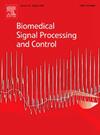Chromosome image segmentation based on class imbalance skeleton semi-supervised model
IF 4.9
2区 医学
Q1 ENGINEERING, BIOMEDICAL
引用次数: 0
Abstract
Karyotyping, encompassing chromosome identification, segmentation, and classification, is pivotal in diagnosing cancer-related and other significant global health issues. Major challenges in karyotyping are the reliance on large volumes of annotated data, and the handling of overlapping and touching chromosomes, which often result in the neglect of smaller and less numerous chromosomes. To overcome the limitations regarding these two issues, we propose an advanced semi-supervised chromosome segmentation method—CI3SM (Class Imbalance Skeleton Semi-Supervised Model). CI3SM enhances model consistency and accuracy on unlabeled data by leveraging cross-pseudo supervision and a dual-path skeleton data augmentation strategy. To tackle issues of low segmentation accuracy for small chromosomes and slow category training speed, CI3SM incorporates a CIMM (Class Imbalance Mitigation Module) and a CISCM (Class Intelligent Speed Control Module). Experimental results demonstrate that CI3SM consistently surpasses several state-of-the-art methods in chromosome segmentation tasks, achieving substantial improvements across key performance metrics. Notably, CI3SM realizes a 0.586% enhancement in the Dice coefficient, a 0.897% reduction in Average Surface Distance (ASD), and increases of 0.818%, 0.692%, and 0.654% in the Jaccard index, recall, and F1 score, respectively. These results underscore CI3SM’s capability to deliver superior segmentation outcomes by more effectively harnessing unlabeled data and implementing refined strategies tailored to address the complexities associated with small chromosome segmentation.
基于类失衡骨架半监督模型的染色体图像分割
核型包括染色体鉴定、分割和分类,在诊断癌症相关和其他重大的全球健康问题中至关重要。核型的主要挑战是依赖于大量的注释数据,以及对重叠和接触染色体的处理,这往往导致忽略较小和数量较少的染色体。为了克服这两个问题的局限性,我们提出了一种先进的半监督染色体分割方法——类失衡骨架半监督模型(Class Imbalance Skeleton semi-supervised Model, ci3sm)。CI3SM通过利用交叉伪监督和双路径骨架数据增强策略,增强了未标记数据上的模型一致性和准确性。为了解决小染色体分割精度低和分类训练速度慢的问题,CI3SM结合了一个类不平衡缓解模块(CIMM)和一个类智能速度控制模块(CISCM)。实验结果表明,CI3SM在染色体分割任务中始终优于几种最先进的方法,在关键性能指标上取得了实质性的改进。值得注意的是,CI3SM在Dice系数上提高了0.586%,在平均表面距离(ASD)上降低了0.87%,在Jaccard指数、召回率和F1分数上分别提高了0.818%、0.692%和0.654%。这些结果强调了CI3SM通过更有效地利用未标记数据和实施量身定制的精细策略来解决与小染色体分割相关的复杂性,从而提供卓越的分割结果的能力。
本文章由计算机程序翻译,如有差异,请以英文原文为准。
求助全文
约1分钟内获得全文
求助全文
来源期刊

Biomedical Signal Processing and Control
工程技术-工程:生物医学
CiteScore
9.80
自引率
13.70%
发文量
822
审稿时长
4 months
期刊介绍:
Biomedical Signal Processing and Control aims to provide a cross-disciplinary international forum for the interchange of information on research in the measurement and analysis of signals and images in clinical medicine and the biological sciences. Emphasis is placed on contributions dealing with the practical, applications-led research on the use of methods and devices in clinical diagnosis, patient monitoring and management.
Biomedical Signal Processing and Control reflects the main areas in which these methods are being used and developed at the interface of both engineering and clinical science. The scope of the journal is defined to include relevant review papers, technical notes, short communications and letters. Tutorial papers and special issues will also be published.
 求助内容:
求助内容: 应助结果提醒方式:
应助结果提醒方式:


